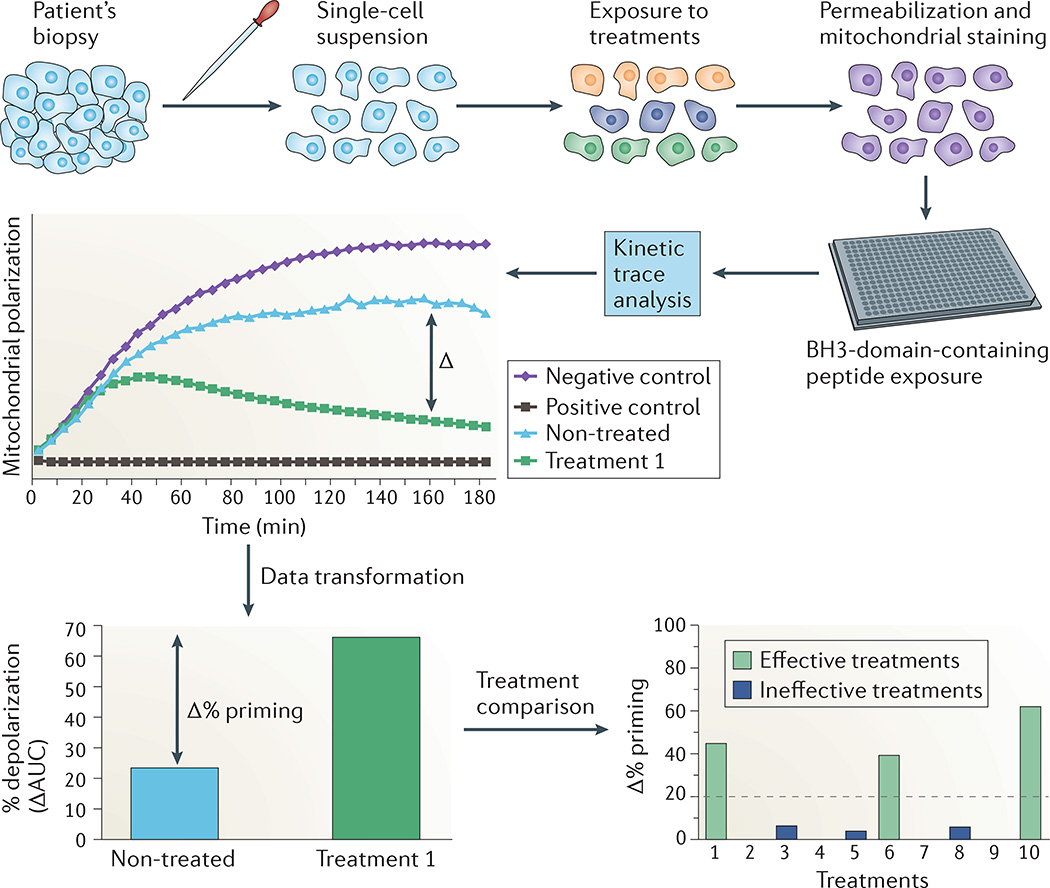New biomarker that can predict patient responses to cancer therapies
More Information

Dynamic BCL-2 homology domain 3 (BH3) profiling is an example of a newer, more molecularly precise assay that can be used for ex vivo functional screening. Biopsy material from the patient is dispersed (for solid tumours) and briefly (for 16–24 hours) exposed to potential drug treatments. After incubation, cells are permeabilized and exposed to BH3-domain-containing peptides. Mitochondrial outer membrane permeabilization is measured, generating a kinetic trace of mitochondrial polarization (central graph). In this analysis, drug treatments that shift the apoptotic threshold generate a large increase in the difference between the kinetic trace area under the curve (AUC) for a negative control-treated sample and the drug-treated sample. This difference creates the ‘Δ% priming’ metric of apoptotic threshold (lower left graph). By comparing this metric across control and drug-treated samples, one can select drug treatments that preferentially lead to apoptotic priming (lower right graph).
